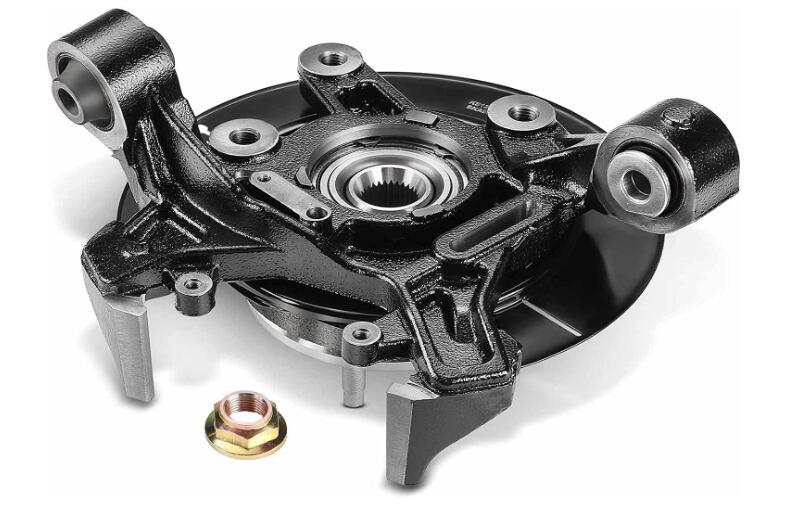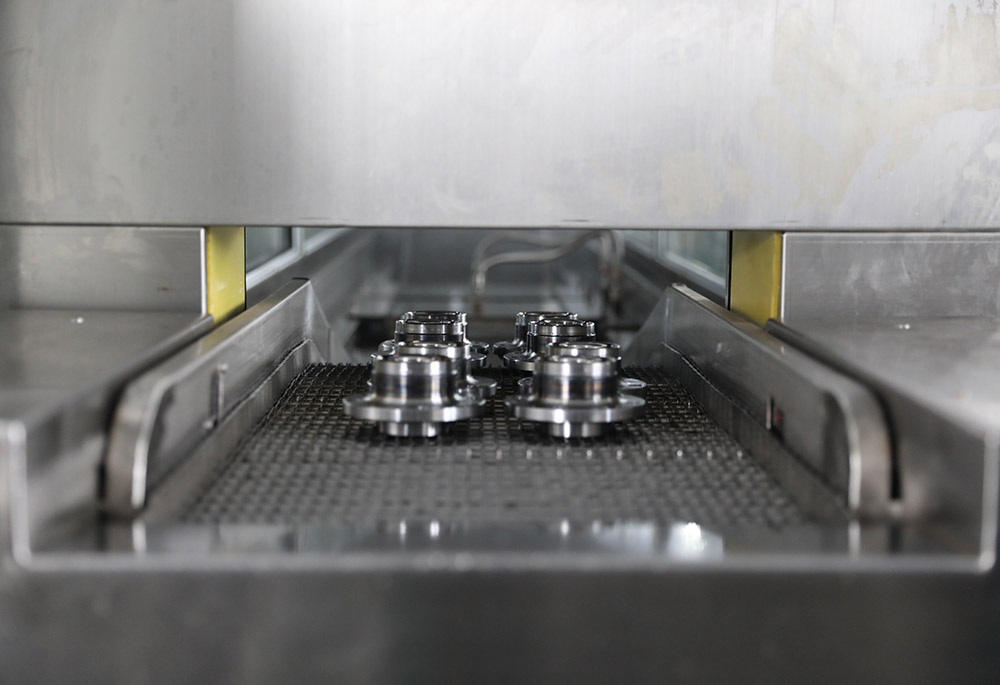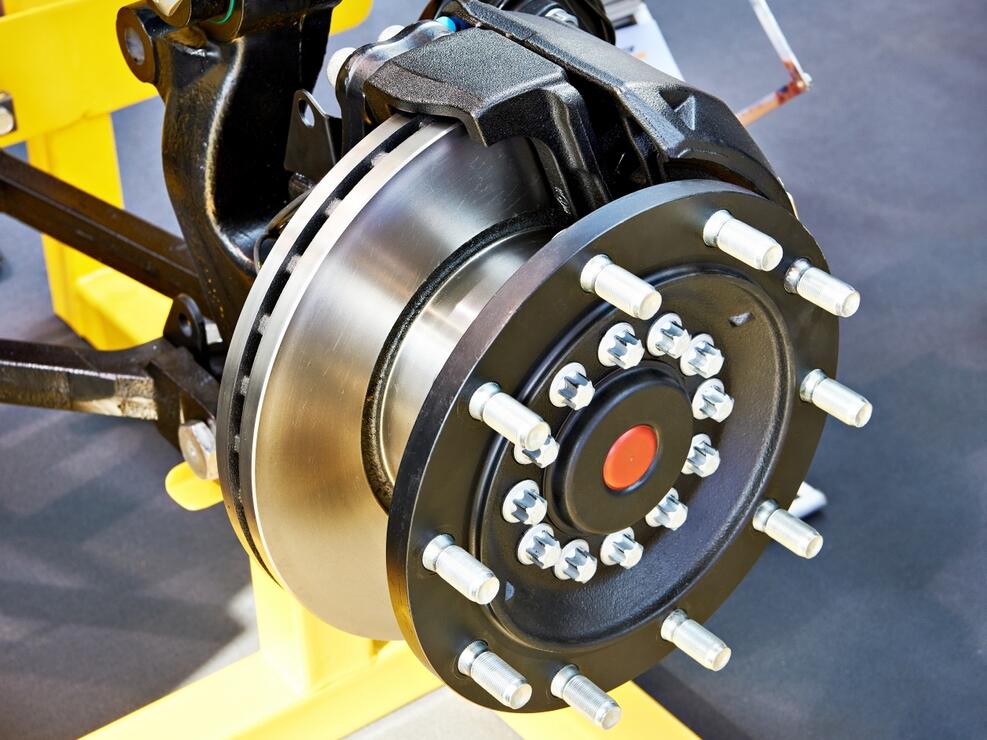Introduction
Wheel bearings are an essential component of an automobile’s mechanics.
These parts must handle high stresses and loads while providing a seamless rotation for the wheel hub.
Consequently, the material properties of a wheel bearing significantly affect its performance, durability, and overall vehicle safety.
This article aims to explain in detail the critical material properties that define a high-quality wheel bearing.
Part 1: Hardness
One of the fundamental properties of a high-quality wheel bearing is its hardness.
Hardness refers to the material’s resistance to permanent indentation or deformation.
In a wheel-bearing context, hardness directly correlates with its ability to withstand enormous pressures and stresses during regular operation.
Due to its exceptional hardness, high-carbon chromium-bearing steel, such as SAE 52100, is the standard material used for most wheel bearings.
It contains approximately 1% carbon and 1.5% chromium, which forms hard carbides that enhance its hardness and wear resistance.
This material undergoes heat treatment, typically through hardening and tempering, significantly improving its hardness and toughness.
A bearing’s hardness can be quantified using scales such as the Rockwell hardness scale (HRC) or the Vickers hardness scale (HV).
For SAE 52100 steel, a typical hardness range after heat treatment is 58-64 HRC.
The steel has an excellent balance of wear resistance and toughness at this hardness level, making it an ideal choice for wheel bearings.
Part 2: Toughness
Toughness is another critical material property for wheel bearings.
It refers to the ability of a material to absorb energy and plastically deform without fracturing or breaking.
A bearing material should be tough enough to handle shocks and impacts without failing, which is common in automotive applications due to potholes, speed bumps, and other road irregularities.
As noted earlier, heat treatment enhances bearing steel’s hardness and toughness.
The process involves heating the steel to a high temperature, cooling it rapidly (quenching), and finally reheating it to a lower temperature (tempering).
The quenching process forms a hard structure known as martensite, while tempering reduces brittleness and improves toughness.
Balancing hardness and toughness is vital for bearing materials.
While hardness ensures the bearing can handle heavy loads without excessive wear, toughness prevents the bearing from fracturing under impact loads.
It’s crucial to strike the right balance between these properties to ensure a high-quality, durable wheel bearing.
Part 3: Wear Resistance
Wear resistance, another vital property describes a material’s ability to withstand surface loss due to friction.
As wheel bearings are continuously subjected to rotational friction, high wear resistance is essential for longevity.
As mentioned, chromium carbides formed in SAE 52100 steel play a key role in enhancing its wear resistance.
These hard particles act as a barrier to the steel surface, reducing material loss when the bearing is in operation.
Furthermore, the bearing’s geometry and surface finish can influence wear resistance.
For instance, a smoother surface finish reduces friction and subsequent wear.
Thus, a quality-bearing manufacturer pays close attention to material selection and manufacturing processes that ensure optimal geometry and surface finish.
Part 4: Corrosion Resistance
While carbon chromium-bearing steel offers excellent hardness, toughness, and wear resistance, it is not very corrosion-resistant.
Therefore, additional surface treatments, such as chrome or zinc plating, may enhance corrosion resistance.
Corrosion resistance is especially crucial in applications where the bearing might be exposed to water, salts, and other corrosive agents, such as in marine or winter conditions.
A corroded bearing can lose its structural integrity and eventually fail, which makes corrosion resistance an important property to consider.
Part 5: Heat Resistance
The ability to resist high temperatures or heat resistance is a pivotal property of wheel-bearing materials.
Bearings are continually subjected to heat generated by friction during operation, not to mention the high temperatures produced by the braking system near them.
Therefore, the material used for wheel bearings must withstand these high temperatures without any loss of mechanical properties or structural integrity.
As previously noted, SAE 52100 is a commonly used material for wheel bearings due to its high hardness and toughness.
However, its heat resistance is also worth mentioning.
This material’s capacity to maintain its hardness and structural stability under high temperatures ensures the bearing’s longevity and reliable performance.
Heat treatments that enhance hardness and toughness also boost the steel’s heat resistance.
For instance, the hardening process helps the material retain its hardness at elevated temperatures, which prevents the bearing from deforming or wearing excessively under high-heat conditions.
Part 6: Fatigue Strength
Finally, fatigue strength is another critical material property for wheel bearings.
Fatigue refers to the weakening of a material caused by repeatedly applied loads, leading to the formation and growth of cracks within the material.
Fatigue strength is the maximum stress a material can withstand under cyclic loading without failing.
In-wheel bearings, rings, and rolling elements are subjected to repeated stress cycles during operation.
Over time, these repeated stresses can lead to failure if the material’s fatigue strength is inadequate.
Again, SAE 52100 steel demonstrates excellent fatigue strength due to its high carbon and chromium content and the heat treatments it undergoes.
The material’s inherent toughness also contributes to its fatigue strength, allowing it to absorb stress cycles without cracking.
Manufacturing processes, such as forging and machining, can also affect a bearing’s fatigue strength.
For example, carefully controlling these processes can prevent defects that could serve as initiation points for fatigue cracks, enhancing the bearing’s fatigue strength and lifespan.
Part 7: Corrosion Resistance
Another critical property to consider is the corrosion resistance of the material.
Corrosion resistance is the ability of a material to withstand damage caused by oxidization or other chemical reactions, typically with air and water.
This is an especially crucial property for wheel bearings, regularly exposed to various environmental conditions, including water, salt (in winter climates), and debris.
Corrosion can degrade the surface of the bearing material, leading to pitting and increased friction.
Over time, this corrosion can lead to premature bearing failure, affecting the safety and performance of the vehicle.
Thus, selecting a bearing material with high corrosion resistance helps ensure the component’s longevity and overall vehicle performance.
SAE 52100, while having many advantageous properties, does not have excellent corrosion resistance, especially when compared to stainless steels or certain non-ferrous alloys.
As such, wheel bearings are often given a protective coating to increase their resistance to corrosion.
Coatings can range from simple paints to more advanced solutions such as Physical Vapor Deposition (PVD) or Chemical Vapor Deposition (CVD) coatings, which can significantly enhance the corrosion resistance of the bearing.
Part 8: Elasticity
Finally, the elasticity of the material, defined as the ability to deform under stress and then return to its original shape when the stress is removed, plays a vital role in wheel bearing performance.
While hardness and toughness are paramount, a certain degree of elasticity is necessary to accommodate the stresses experienced by the bearing during operation.
Too brittle a material, while complex and potentially substantial, may not withstand the variable and repeated loads placed upon the bearing.
This is particularly true in applications like wheel bearings, where loads vary in magnitude and direction.
A material with sufficient elasticity can deform under these loads and then return to its original shape, preventing permanent deformation and potential failure.
The elasticity of bearing material can be enhanced through various heat treatments.
For instance, tempering, performed after the initial hardening process, can help introduce a certain level of elasticity by reducing the brittleness of the hardened steel.
Conclusion
In conclusion, selecting an appropriate material for wheel bearings is a complex task that involves carefully considering various material properties.
Hardness, toughness, wear resistance, corrosion resistance, heat resistance, fatigue strength, and elasticity are significant in defining a high-quality wheel bearing.
By understanding these characteristics and how they impact bearing performance, manufacturers can make informed decisions that enhance the quality of their products, ultimately leading to safer, more efficient vehicles.
As advances in materials science continue to evolve, we can expect even further improvements in wheel bearing technology.




